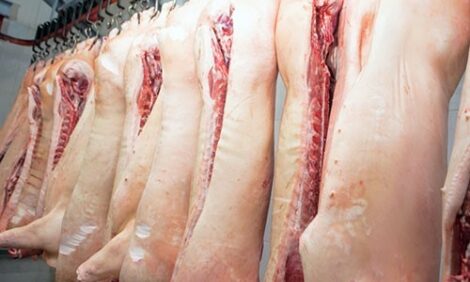



Improving Food Safety Recalls
CANADA - Groundbreaking Canadian research into improving food safety recalls has implications for both the agriculture industry and the research community.Researchers wanted to improve food safety recalls, but first they needed a statistical method for estimating the number of cattle that make up one ground beef batch. Basic ecology methods involve capturing wild animals, marking and releasing them, and recapturing them later. By comparing the numbers of new and recaptured individuals, scientists could then estimate population numbers. Using this method, previous research put the number of individuals making up one ground beef batch at 300 to 500.
“Dr Hu, in our group, has done a really nice job of looking at existing methodologies, and realising that they’re dealing with simpler problems - for example small population sizes. In the case here, with all the different sources and also the large amount of product that’s involved, there’s a lot of heterogeneity, particularly in terms of what we call the capture probability,“ says Dr Graham Plastow, CEO of Livestock Gentec at the University of Alberta.
In ecology, capture probability refers to the likelihood of an animal being captured. In a packing plant, it would refer to the likelihood of an individual animal being detected in a batch of ground beef.
Scientists took 10 samples from each ground beef batch. They then extracted about 100 muscle fibres from each sample, and mined the DNA from each muscle fibre. By cross-referencing the DNA, they figured out how many muscle fibres came from different individuals. Using these numbers, researchers estimated the number of individuals in six batches. Their estimates ranged from a low of 411 individuals in one batch, to over 1000 in others, a significant increase from previous estimates.
The DNA sampling methods aren’t only applicable to the research community. Eventually the food industry should be able to use the results to improve food safety recalls.
“The idea is that if there is a problem, that we could use this technology to narrow down the window where the contamination has occurred,“ Dr Plastow says.
He explains that packers would know which batches were contaminated based on DNA testing. More targeted recalls could rebuild consumer confidence. Less meat would need to be recalled, saving the industry money without jeopardising consumer safety.
The beef industry could also make traceability programmes more specific with DNA technology, something that is already being done in Japan. Kurobuta pork is a high-end product in Japan, but grocery store shelves were flooded with cheaper imitation meats. Dr Plastow worked with the Japanese industry to develop DNA testing procedures, effectively ending false Kurobuta marketing. Canada’s beef industry could do the same to assure shoppers that they are buying Canadian beef, which is something that market research shows consumers are willing to pay more for.
The research is only in the first of three years, and more work is needed before the DNA sampling methods can be rolled out commercially. Researchers still need to model how contamination spreads through plants. They hope to find a simpler way to micro-dissect the muscle fibres. New DNA technology could allow researchers to develop a batch-specific fingerprint in the plant.
“Having really demonstrated the technical capability, and put together the statistical tool to do the calculations, we can now look at the practicality of what’s possible,“ says Dr Plastow.








